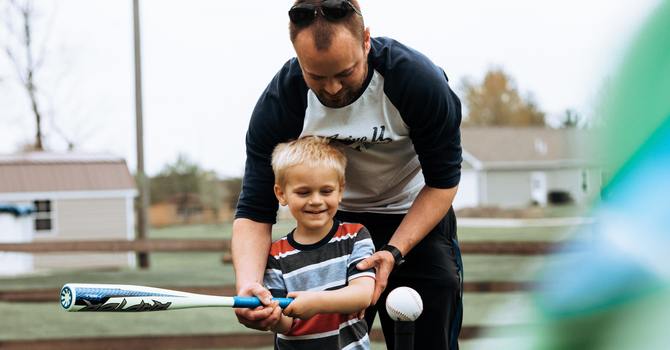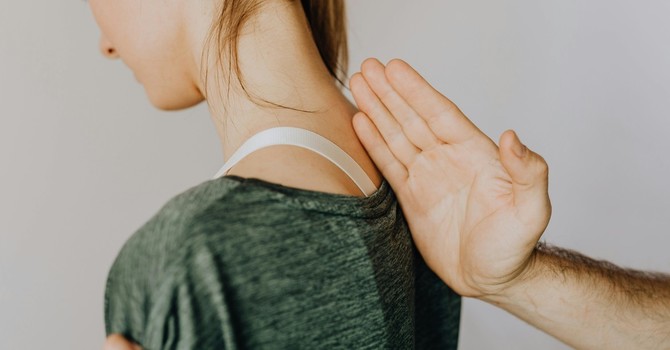
Shoulder pain can be a debilitating issue, affecting daily activities and sports performance. A common diagnosis for shoulder pain is a Superior Labrum Anterior and Posterior (SLAP) tear. Understand not all shoulder injuries involve SLAP tears, however for those that do there are a few common misconceptions surrounding SLAP tears we should clear up. In Springfield, MO, sports chiropractors are at the forefront of providing effective, non-surgical treatment options for SLAP tears. This blog aims to dispel common myths and offer insights into the role of sports chiropractic care in managing SLAP tears.
UNDERSTANDING ANATOMY & SLAP TEARS
The glenohumeral joint is a ball and socket joint where the glenoid fossa of the shoulder blade meets the head of the humerus. Think of it as a golfball (the head of the humorus) sitting inside a golf tee (the glenoid fossa), this shallow joint provides the ability for the shoulder to be the most mobile joint in the body! However, great mobility requires great stability . The labrum, a fibrocartilaginous ring around the glenoid fossa, increases the depth of this socket and helps maintain the stability of the shoulder. A SLAP tear involves the top (superior) part of the labrum, affecting both the front (anterior) and back (posterior) portions.
SLAP TEARS: THE FOUR TYPES OF TROUBLE
SLAP (Superior Labrum Anterior and Posterior) tears were introduced by Snyder and colleagues in 1990, where they distinguished four types of SLAP tears:
-
Type One: It's like fraying on your favorite jeans – the labrum is a bit worn but still hanging out with the biceps tendon.
-
Type Two: Here, the labrum and the biceps tendon are like a bad breakup; they've detached.
-
Type Three: Picture a bucket handle tear of the labrum, but the biceps tendon - it is still intact.
-
Type Four: This is where the bucket handle tear extends into the biceps tendon - it is detached

Now that we have a better understanding of the anatomy and types of SLAP tears, let’s look at some common misconceptions or myths surrounding SLAP tears…
COMMON MYTH #1: ALL LABRAL ABNORMALITIES ARE “INJURIES”
Not all labral abnormalities need to be categorized as injuries. Imaging studies often reveal labral tears in asymptomatic individuals. For instance, Schwarzberg et al. (2016) found labral tears in over 50% of adults aged 45-60 with no symptoms. Similarly, Cooper et al. (2022) reported labral pathology in 69% of asymptomatic elite rock climbers. This finding suggests that labral tears can be a part of the natural aging process or a result of repetitive activities, especially in athletes.
COMMON MYTH #2: SURGERY IS THE ONLY OPTION FOR SLAP TEARS
This raises the question: do you really need surgery? The necessity of surgery for SLAP tears is one of the most significant misconceptions. While surgery can be beneficial, it is not always the best or only option. Schroer et al. (2017) compared real and sham surgeries for type 2 SLAP tears, concluding that neither offered significant clinical benefits over the other. While Dr. Kristen Matthew and Dr. David Litner, 2 prominent figures in the Major League Baseball orthopedic world, highlight the importance of educating patients about the prevalence of asymptomatic SLAP lesions. They suggest that an MRI diagnosis of a SLAP lesion is often an incidental finding that could lead to unnecessary anxiety and, worse, unnecessary surgery.
THE ROLE OF SPORTS CHIROPRACTIC IN TREATING SLAP TEARS
Before you jump on the surgery bandwagon, consider this: a non-operative protocol often has a high likelihood of success. This is backed by a systematic review by Steinmetz et al. (2022), which concluded that non-operative treatment of SLAP in athletes can be successful, especially if they complete their rehabilitation program. In Springfield, MO, sports chiropractors offer a non-operative protocol for SLAP tears. This approach aligns with the recommendations of experts like Dr. Matthew and Dr. Litner, emphasizing patient education and a comprehensive treatment plan that addresses the entire shoulder complex, not just the labrum.
THE SPORTS CHIRO APPROACH: NON-OPERATIVE TREATMENT
Non-operative treatment for SLAP tears includes a range of modalities, such as:
-
Manual Therapy: Techniques like soft tissue mobilization and joint manipulation can alleviate pain and improve mobility.
-
Corrective Exercises: Targeted exercises to strengthen shoulder muscles and improve stability.
-
Patient Education: Understanding the condition and how to manage symptoms effectively.
-
Movement Modifications: Advice on movement pattern modifications to reduce stresses on the tissues and prevent further injury.
In the world of shoulder injuries, SLAP tears are often misunderstood and mismanaged. Surgery might seem like the quick fix, but it's not always the answer. As a sports chiropractor in Springfield, MO, I encourage anyone experiencing shoulder pain to seek a comprehensive evaluation. Remember, your shoulder's health is no trivial matter – it's a joint effort




